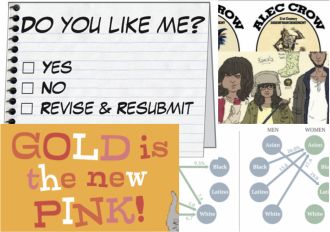 This week we played around with #socgreetings, got excited to see movers and shakers talking about the We Are All Criminals project, and mourned rabble-rousing change-maker Nelson Mandela while hoping those he inspired would continue bending the arc of history… and society. Here’s what else we got up to. more...
This week we played around with #socgreetings, got excited to see movers and shakers talking about the We Are All Criminals project, and mourned rabble-rousing change-maker Nelson Mandela while hoping those he inspired would continue bending the arc of history… and society. Here’s what else we got up to. more...
The Editors’ Desk:
“Sociology in Retired Football Player’s Past,” by Doug Hartmann. He makes it sound so sordid!
There’s Research on That!
“Olympic Flame Relay Goes Lunar,” by Amy August. Transnational ritual lifts off.
“Texas Abortion Restrictions Take Effect,” by Jacqui Frost. New laws change the mechanics, but not the incidence, of abortion.
Citings & Sightings:
“Redesigning Work to Find Balance,” by Erin Hoekstra. U of M sociologists tell the Huffington Post that flexibility increases productivity—they’ve got the research to prove it.
“Angry White Men and Aggrieved Entitlement,” by John Ziegler. Michael Kimmel on the defenses that go up when unrecognized privilege is challenged. The Real World: White Male America.
“Libraries, Coffee Shops, and Natural Disasters,” by Molly Goin. Eric Klinenberg on civic spaces and disaster response.
A Few from the Community Pages:
- Football! Sociological Images: Cliff Leek on hazing and masculinity in pro football and ThickCulture: “Gender Socialization and the NFL” and “Turning away from Football.”
- Feminism! Miley et al. with Girl w/ Pen!
- Cyborgs! WWIS, you don’t know me! Post-LOLcat lingo! Currency, privacy, and competing values!
Scholars Strategy Network:
“Are Job Training Programs a Good Way to Fight Poverty?” by Harry Holzer.
“The Value of Providing Continued Healthcare to People Leaving America’s Prisons,” by Emily Wang.
You may have heard the story about the NFL lineman, JohnMoffitt, who recently up and quit the game just months away from locking in the guaranteed pension and benefits that comes with being in the league for three years. The New York Times story attributes Moffitt’s stunning decision to concerns about his health and well being, as well as his off-season reading of the Dalai Lama and Noam Chomsky. According to the Times, these intellectuals helped Moffitt conclude that “he was a pawn in a machine that controlled his life and that he no longer wanted to meet the expectations attached to that life.” But the report also also mentions that the “free spirited” Moffitt was a sociology major at the University of Wisconsin, Madison. Do you think his sociological studies influenced his thinking and decision in any way? Seems like something that inquiring and aspiring sociologists might want to know.
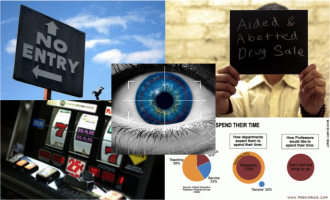 The Care and Feeding of Co-Authors:
The Care and Feeding of Co-Authors:
As Chris Uggen pointed out on the Twitters, it’s easy to disappoint your coworkers. Whether it’s producing actual Swedish Fish when a candy-mergency arises in a late-night writing session or dropping the ball when it’s your turn to write the lit review, there are just so many opportunities to co-write badly. Here’s my very quick editorial advice should you decide to undertake a co-authored project: more...
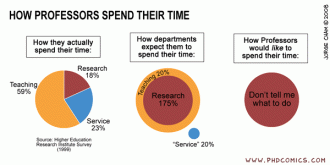
The life and work of a sociology professor was a topic of conversation in my senior capstone course this week. It started when I asked students to estimate what percent of my time was allocated to teaching, research, service, and public outreach/engagement—and then told them about how formal tenure requirements and departmental expectations compared with my actual hours worked on any given week. I was trying to illustrate competing pressures and demands, and I couldn’t help but laugh when one student sent along this cartoon (with no comment or analysis).
Perhaps I’d gone overboard stressing the disconnections? I really do love my job.
But back to class: one of the biggest topics of inquiry and conversation involved the question of where outreach and engagement fit in the world of higher education? My students this semester have been fascinated with and actually kind of inspired by what we call“public sociology,” while also puzzled by its lack of recognition and reward in the big scheme of academia, especially in the context of a public land grant institution like we have here at the University of Minnesota.
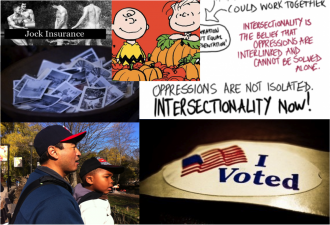 Missing the Point
Missing the Point
I was so struck last night to hear a little piece about the sociologist Clifford Nass on NPR (in a fun side note, I’d like to point out that Nass was also a computer scientist and professional magician… which is pertinent to the next sentence). Yes, he was known for his warning that multitasking was dangerous to real thought and real learning, but what caught my ear was how his colleagues spoke of his relationship with expanding technologies. Nass didn’t seem to have any antipathy for the tech—he saw its utility, of course—but he realized that all those blinky things were going to be attention sucks. Multiple distractions tend to be bad when you aren’t a good multitasker (to be fair, he didn’t think anyone was a good multitasker), but worse, he seemed to believe, the divided attention meant that his students paid attention to too much noise. Over time, he felt his students were getting worse and worse at understanding an argument and repeating it clearly. They weren’t good at finding the point or pulling out a specific nugget of information from a whole article. They had trained themselves (or been trained by their technologies) to see the forest, not the trees. I’m not wholly convinced, but I am intrigued—and I’m sad that the world has lost another great sociologist in the meantime. more...

My colleague Teresa Swartz (full disclosure: I’m also married to her) has this writing exercise that she does with all of her Intro students at the end of the semester. In a nutshell, she asks them to write a brief paper situating themselves in the social contexts that have most profoundly shaped and determined their lives and identities. The exercise, which she calls a “sociological memoir,” is inspired by C.Wright Mills‘ famous definition of the sociological imagination as becoming aware of the intersection of one’s personal biography with larger social and historical forces. The book she often has the class read as an illustration is Dalton Conley’s wonderfully idiosyncratic early life narrative Honky. In the last couple of days I’ve read another couple of pieces I think I’m going to recommend to her as well.
Andrew Lindner’s “Epilepsy, Personally and Sociologically,” on TSP’s ThickCulture blog, is one of them. more...
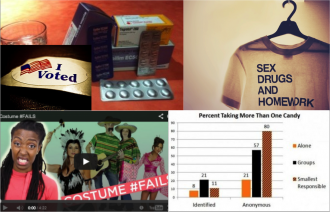 At a Loss
At a Loss
The Society Pages is housed, as many of you know, at the University of Minnesota, and stems from a vision Doug Hartmann and Chris Uggen formulated in their term as the editors of the ASA’s journal Contexts. That vision was also shaped by the young sociologists who made up the graduate editorial board of Contexts for each of its four years at the U of M, and later when it came to creating and sustaining The Society Pages. It’s now been a week since we lost one of those bright young minds: Tim Ortyl. I still don’t know what to say, other than that Tim did everything in his life whole-heartedly, and so I’m pleased that you can read some of his work here on our site, as well as a Contexts article that SAGE publications and the ASA are offering as a free download. I believe Tim had contributed immensely to the discipline already, and I hope that having known him as a friend, teacher, colleague, or student will continue to inspire sociological imaginations long after our quiet time of mourning fades. Right now, that time seems impossible. more...
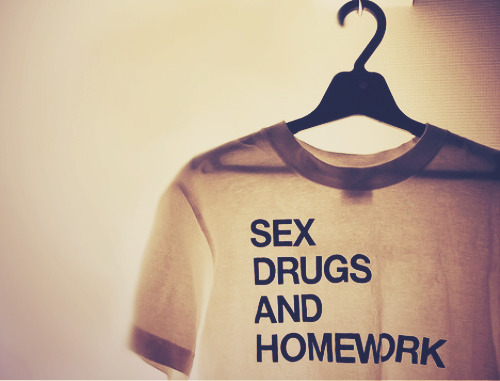
“Docs to Parents: Limit Kids’ Texts, Tweets, Online.” So reads one version of today’s reports on a new study published in the American Academy of Pediatrics Policy. I haven’t even read the study yet, and I’m skeptical. First, why are physicians the experts on this? Second, what research is this directive based upon? From the news story, I learned only that, according to the AAPP study, time online has been “linked with” such bad things as “violence, cyberbullying, school woes, obesity, a lack of sleep,” as well as “a host of other problems.” “Linked with?” Even the study’s lead author acknowledges in the first paragraphs of the article that online activities are “not a major cause of these troubles,” though he does cheekily say, “I guarantee you that if you have a 14-year-old boy and he has an Internet connect in his bedroom, he is looking at pornography.” more...
We’ve lost a true friend and remarkable colleague. Tim Ortyl was an extraordinary young sociologist and TSP grad board member. His countless friends are shocked and saddened by news that he’d passed away yesterday of natural causes due to epilepsy. It is too early and too damn painful to post personal recollections or pictures — especially when Tim’s joy, sly wit, and vitality seem to leap from every image. But his talents and range as a sociologist are amply displayed in the publications he leaves behind, his public writing and podcasts for TSP and Contexts, and in the care and commitment with which he taught hundreds of students about statistics, gender, family, and sexuality. We mourn Tim Ortyl as a young friend with limitless potential, but we also recognize him as an accomplished and respected sociologist.

